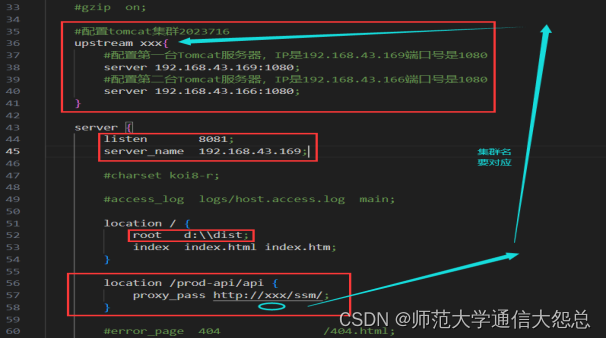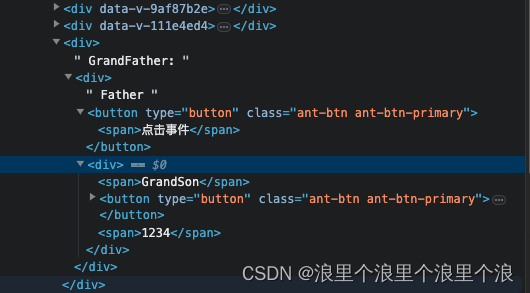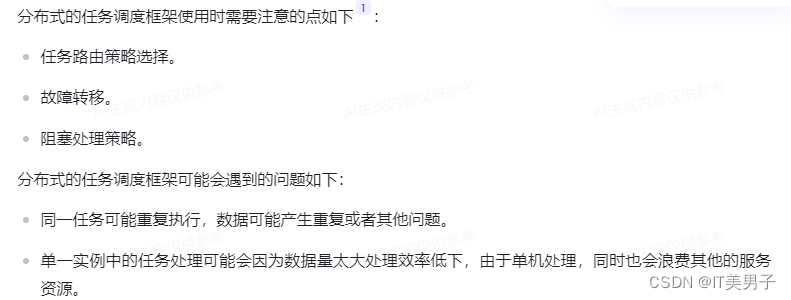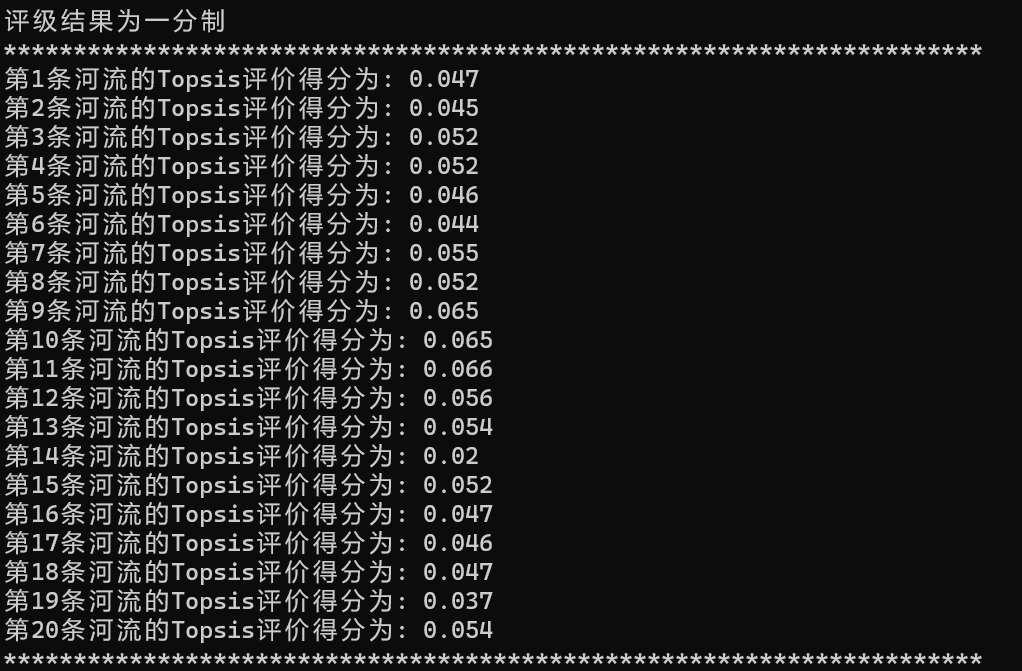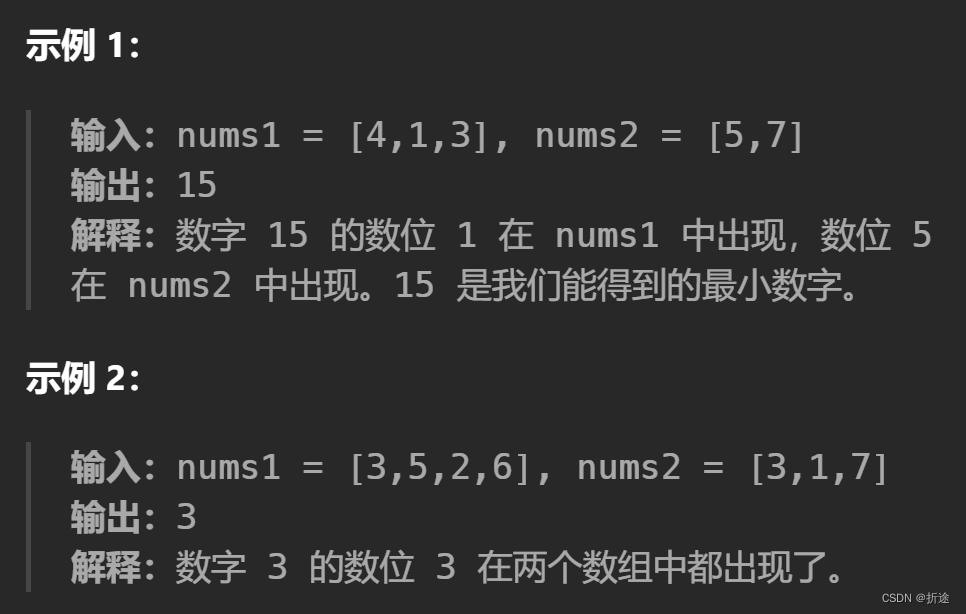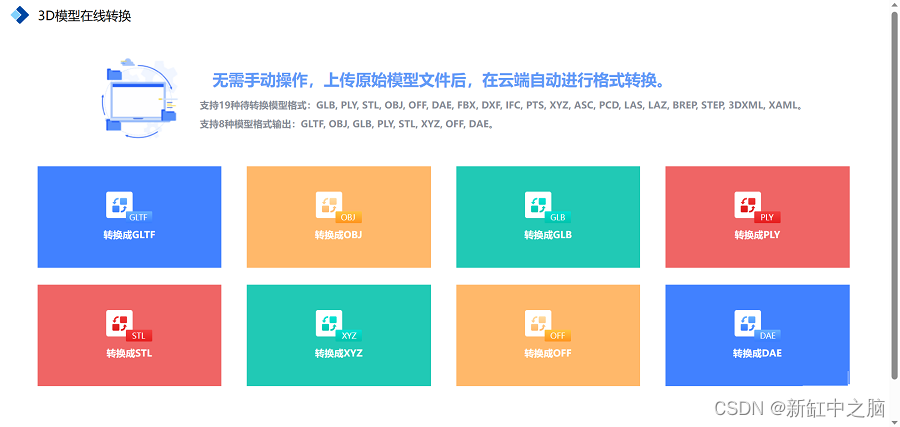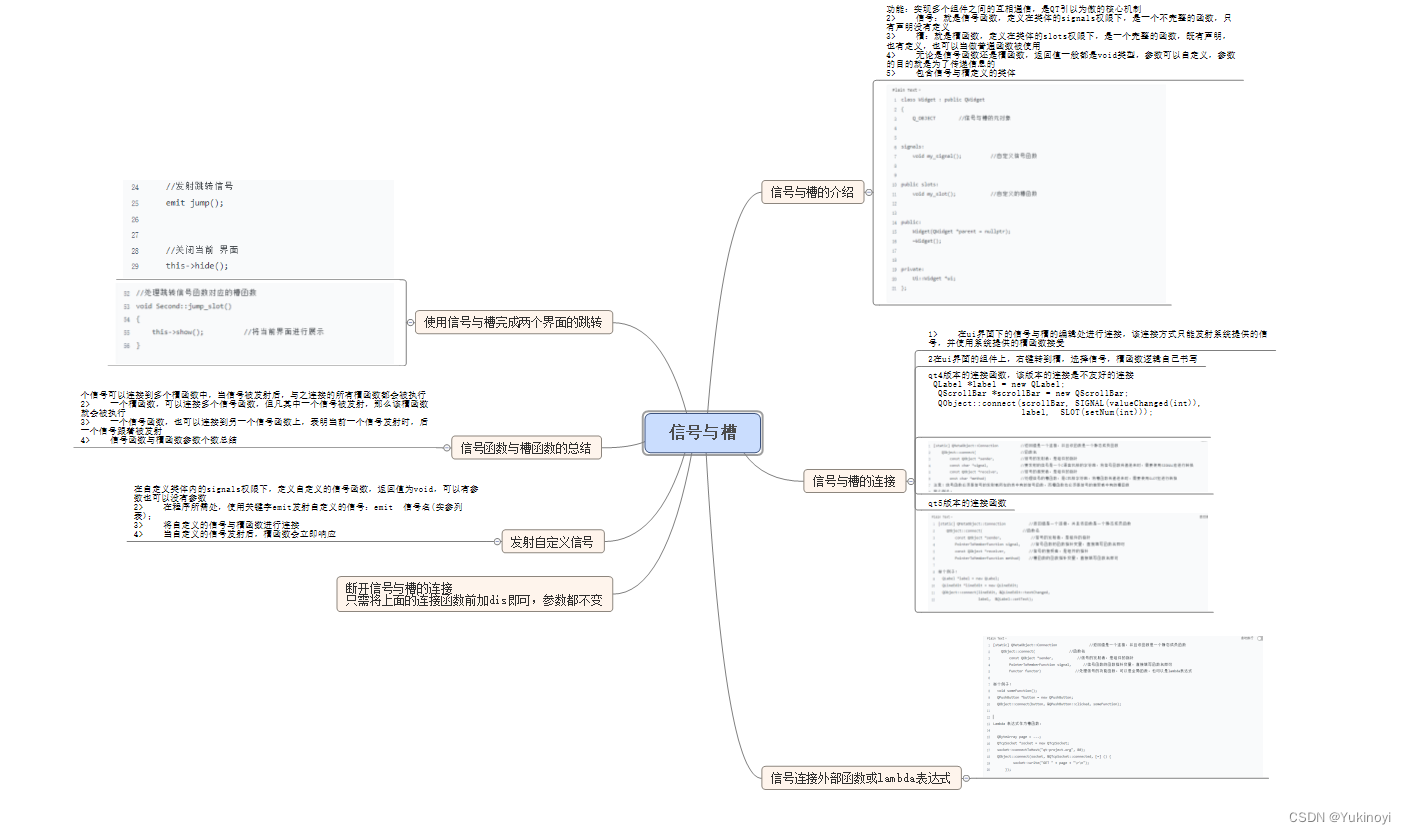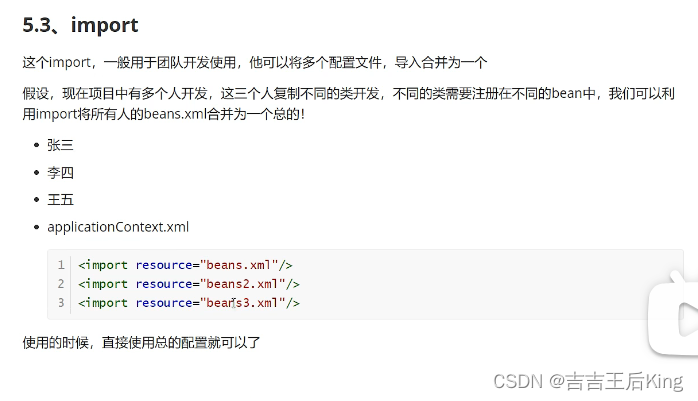一、常用注解
1.1.@RequestMapping
作用:用于映射请求路径与处理请求的方法之间的关系,可以用在类或方法上 。
-
标注在方法上
用于方法上,表示在类的父路径下追加方法上注解中的地址将会访问到该方法
@Controller
public class HelloController {
@RequestMapping("/requestTest")public String requestTest(){return "success";}
}此时请求映射的请求路径为:
http://localhost:8080/springmvc01/requestTest
springmvc01表示项目名
标注在类和方法上
用于类上,表示类中的所有响应请求的方法都是以该地址作为父路径。
注意:当你在类上添加RequestMapping注解后,如果要请求映射,就意味着请求要先映射到标注类的位置,然后再映射到该类的方法上
@Controller
@RequestMapping("/hello")
public class HelloController {
@RequestMapping("/requestTest")public String requestTest(){return "success";}
}此时请求映射的请求路径为:
http://localhost:8080/springmvc01/hello/requestTest
springmvc01表示项目名
参数
- value
@RequestMapping 的 value 属性必须设值; @RequestMapping 的 value 属性是通过当前请求的请求地址来匹配请求; 从源码中可以看到value属性是一个字符串类型的数组,因此说明可以将多个请求映射到一个方法上,只需要给 value 来指定一个包含多个路径的数组。
- method
@RequestMapping的method属性是通过当前请求的请求方式来匹配请求; 浏览器向服务器发送请求,请求方式有很多GET、HEAD、POST、PUT、PATCH、DELETE、OPTIONS、TRACE。可以使用 method 属性来约束请求方式。
- headers
@RequestMapping的headers属性是通过当前请求的请求头信息来匹配请求; @RequestMapping的headers属性是一个字符串类型的数组,可以通过下面四种表达是来设置匹配关系 例如: “header”:要求请求映射的请求必须为包含 header的请求头信息 “!header”:要求请求映射的请求必须为不包含 header的请求头信息 “header=value”:要求请求映射的请求必须为包含 header的请求头信息,并且header的值必须为value “header!=value”:要求请求映射的请求必须为包含 header的请求头信息,并且header的值必须不是value
- params
@RequestMapping的params属性是通过当前请求的请求参数来匹配请求; @RequestMapping的params属性是一个字符串类型的数组,可以通过下面四种表达是来设置匹配关系 例如: “param”:要求请求映射的请求必须为包含 param的请求参数 “!param”:要求请求映射的请求是不能包含param的请求参数 “param=value”:要求请求映射的请求必须包含 param 的请求参数,且 param 参数的值必须为 value “param!=value”: 要求请求映射的请求是必须包含 param 的请求参数,其值不能为 value。
示例一:@RequestMapping的params属性
@RequestMapping(value = "/test",params = "username")
public String test(){return "success";
}注意:我们设置了params属性,就意味着该请求映射的请求必须包含username才能够请求成功。
示例二:@RequestMapping的headers属性
@RequestMapping(value = "/test",headers = "Host = localhost:8081")
public String test(){return "success";
}注意:如果当前请求不满足headers属性,此时页面就会显示404错误,即资源未找
- @GetMapping:处理get方式请求的映射
- @PostMapping:处理post方式请求的映射
- @PutMapping:处理put方式请求的映射
- @DeleteMapping:处理delete方式请求的映射
- @GetMapping就相当于@RequestMapping(method=RequestMethod.GET),它会将get映射到特定的方法上。
1.2.@RequestParam
作用:用于获取请求参数的值,并将其绑定到方法的参数上。
参数 说明
- value
请求中传入参数的名称,如果不设置后台接口的value值,则会默认为该变量名。
- required
该参数是否为必传项。默认是true,表示请求中一定要传入对应的参数,否则会报404错误,如果设置为false时,当请求中没有此参数,将会默认为null,而对于基本数据类型的变量,则必须有值,这时会抛出空指针异常。如果允许空值,则接口中变量需要使用包装类来声明。
- defaultValue
参数的默认值,如果请求中没有同名的参数时,该变量默认为此值。注意默认值可以使用SpEL表达式,如"#{systemProperties[‘java.vm.version’]}"
@RequestMapping("/queryBooks")
public List<Book> queryBooks(@RequestParam(required = false,defaultValue = "0",value="page") int page,@RequestParam(required = false,defaultValue = "10",value = "rows") int rows){return bookService.queryBooks(page,rows);
}1.3.@RequestBody
作用:用于将请求体中的JSON数据绑定到方法的参数上。
GET方式无请求体,所以使用@RequestBody接收数据时,前端不能使用GET方式提交数据,而是用POST方式进行提交。在后端的同一个接收方法里,@RequestBody与@RequestParam()可以同时使用,@RequestBody最多只能有一个,而@RequestParam()可以有多个。
总结来说就是
-
一个请求:只有一个@RequestBody;
-
一个请求:可以有多个@RequestParam。
@RequestMapping("/hello")
public String toHello1(@RequestBody Book book){log.info(">>>> 使用@RequestBody传递JSON格式的参数:{}", JSON.toJSONString(book));return "index";
}@RequestBody注解对应的类在将HTTP的输入流(含请求体)装配到目标类(即:@RequestBody后面的类)时,会根据json字符串中的key来匹配对应实体类的属性,如果匹配一致且json中的该key对应的值符合(或可转换为)实体类的对应属性的类型要求时,会调用实体类的setter方法将值赋给该属性。
1.4.@RequestHeader
作用:用于获取请求头中指定的参数值。
如果想要获取所有的请求头信息,可以使用 Map<String,String>、MultiValueMap<String,String>、HttpHeaders 这三个 Map 中的任何一个封装所有请求头的 name 和 value。
参数
- name
name 和 value 互为别名,当只有一个参数时,可以省略 value,直接("xxx") 就可以了
- value
name 和 value 互为别名,当只有一个参数时,可以省略 value,直接("xxx") 就可以了
- required
默认情况下,如果请求头中缺少了指定的 name,那么将会报错。 如果没有添加required = false,当请求头中没有这个zking请求头时就会报错。
- defaultValue
如果请求头中缺少了指定的 name ,那么会报错,可以使用 defaultValue 这个属性指定默认值,就可以避免报错 ;如果请求头缺少指定 name ,该属性设置的值将会作为默认值,如果该属性不设置值,它有自己的默认值 DEFAULT_NONE
@GetMapping("/headParams")
public Map userInfo(@RequestHeader(value = "zking",defaultValue = "hello zking") String username,// 将请求头中 name=Accept-Encoding 赋值给形参 encoding@RequestHeader("Accept-Encoding") String encoding,// 将请求头中 name=Host 赋值给形参 host@RequestHeader("Host") String host,// 将所有请求头的 name 和 value 封装到 Map 集合 headsMap 中@RequestHeader Map<String,String> headsMap) {Map map = new HashMap<String, Object>();map.put("username",username);map.put("Accept-Encoding",encoding);map.put("Host",host);map.put("headsMap",headsMap);
return map;
}由于请求头中不存在 name=zking 这个信息,所以如果只用 value=zking 会抛出异常。
解决方案:
1、required 的默认值为 true ,也就是请求头中没有 name=zking 会报错,将其值改为 false,即没有该头信息也不报错
@RequestHeader(value = "zking",required = "false") String username2、不修改 required=true 这个默认值,当头信息中不包含 name=zking ,给它一个默认值 hello zking
@RequestHeader(value = "zking",defaultValue = "hello zking") String username1.5.@PathVariable
作用:用于获取URL路径中的参数值,并将其绑定到方法的参数上。
即当使用@RequestMapping URI template 样式映射时, 即 someUrl/{paramId}, 这时的paramId可通过 @Pathvariable注解绑定它传过来的值到方法的参数上。
//@PathVariable可以用来映射URL中的占位符到目标方法的参数中
@RequestMapping("/testPathVariable/{id}")
public String testPathVariable(@PathVariable("id") Integer id)
{System.out.println("testPathVariable:"+id);return SUCCESS;
}二、参数传递
SLF4J是一个简单的日志门面(Simple Logging Facade for Java),不是具体的日志解决方案,它只服务于各种各样的日志系统。按照官方的说法,SLF4J是一个用于日志系统的简单Facade,允许最终用户在部署其应用时使用其所希望的日志系统。
SLF4J的作用是提供了一种抽象层,使得开发人员可以使用任何他们喜欢的日志框架,而不必关心它们之间的差异。这样可以使开发人员更专注于编写代码,而不是处理日志记录的细节。
在实际运用中,SLF4J通常用于将日志记录从应用程序代码中分离出来,并将其委托给专门的日志记录器。这样可以使得应用程序更易于维护和扩展,并且可以提高性能和可靠性。
pom.xml
<log4j2.version>2.9.1</log4j2.version>
<log4j2.disruptor.version>3.2.0</log4j2.disruptor.version>
<slf4j.version>1.7.13</slf4j.version>//-------------------------------------------------<!--4.log日志相关依赖--><!-- log4j2日志相关依赖 -->
<!-- log配置:Log4j2 + Slf4j -->
<!-- slf4j核心包-->
<dependency><groupId>org.slf4j</groupId><artifactId>slf4j-api</artifactId><version>${slf4j.version}</version>
</dependency>
<dependency><groupId>org.slf4j</groupId><artifactId>jcl-over-slf4j</artifactId><version>${slf4j.version}</version><scope>runtime</scope>
</dependency><!--核心log4j2jar包-->
<dependency><groupId>org.apache.logging.log4j</groupId><artifactId>log4j-api</artifactId><version>${log4j2.version}</version>
</dependency>
<dependency><groupId>org.apache.logging.log4j</groupId><artifactId>log4j-core</artifactId><version>${log4j2.version}</version>
</dependency>
<!--用于与slf4j保持桥接-->
<dependency><groupId>org.apache.logging.log4j</groupId><artifactId>log4j-slf4j-impl</artifactId><version>${log4j2.version}</version>
</dependency>
<!--web工程需要包含log4j-web,非web工程不需要-->
<dependency><groupId>org.apache.logging.log4j</groupId><artifactId>log4j-web</artifactId><version>${log4j2.version}</version><scope>runtime</scope>
</dependency><!--需要使用log4j2的AsyncLogger需要包含disruptor-->
<dependency><groupId>com.lmax</groupId><artifactId>disruptor</artifactId><version>${log4j2.disruptor.version}</version>
</dependency>2.1.基础类型+String
Controller编写:
@Slf4j
@Controller
@RequestMapping("/csdn")
public class IndexController {@RequestMapping("/list")public String list(String name,Integer age){log.info("基础类型+String➡name:{},age:{}",name,age);return "hello";}}此时请求映射的请求路径为:
http://localhost:8080/Spring_MyBatis/csdn/list?name=李文昊&age=18
2.2.复杂类型
Controller编写:
@Slf4j
@Controller
@RequestMapping("/csdn")
public class IndexController {@RequestMapping("/list01")public String list01(Book book, HttpServletRequest req){log.info("复杂类型:bid:{},bname:{}",req.getParameter("bid"),req.getParameter("bname"));log.info("book:{}",book.toString());return "hello";}}此时请求映射的请求路径为:
http://localhost:8080/Spring_MyBatis/csdn/list01?bid=01&bname=圣墟
2.3.@RequestParam
Controller编写:
@Slf4j
@Controller
@RequestMapping("/csdn")
public class IndexController {@RequestMapping("/list02")public String list02(@RequestParam(required = false) String name,@RequestParam Integer age) {log.info("@RequestParam注解传递参数name:{},age:{}",name,age);return "hello";}}此时请求映射的请求路径为:
http://localhost:8080/Spring_MyBatis/csdn/list02?name=李文昊&age=18
如果我们少传递一个age结果会是怎么样的呢 ?
http://localhost:8080/Spring_MyBatis/csdn/list02?name=李文昊
就会提示我们少了一个参数
因为被@RequestParam注解的参数required默认为true表示请求中一定要传入对应的参数,否则会报404错误如果设置为false时,当请求中没有此参数,将会默认为null,而对于基本数据类型的变量,则必须有值,这时会抛出空指针异常。如果允许空值,则接口中变量需要使用包装类来声明。
2.4.@PathVariable
Controller编写:
@Slf4j
@Controller
@RequestMapping("/csdn")
public class IndexController {@RequestMapping("/list03/{id}")public String list03(@PathVariable("id") Integer id) {log.info("@PathVariable: id{}",id);return "hello";}}此时请求映射的请求路径为:
http://localhost:8080/Spring_MyBatis/csdn/list03/7
2.5.@RequestBody
讲解@RequestBody之前,将大家推荐postman或者apipost/eolink等工具发送请求数据。
这些工具可以帮助您模拟发送请求和接收响应,以便更好地理解@RequestBody参数的含义和使用方法。
Controller编写:
@Slf4j
@Controller
@RequestMapping("/csdn")
public class IndexController {@RequestMapping("/list04")public String list04(Map map) {log.info("没有注解: Map:{}",map);return "hello";}@RequestMapping("/list05")public String list05(@RequestBody Map map) {log.info("@ResponseBody: Map:{}",map);return "hello";}}此时请求映射的请求路径为:
http://localhost:8080/Spring_MyBatis/csdn/list04
测试没有注解的

结果是没有获取到参数
测试有注解的
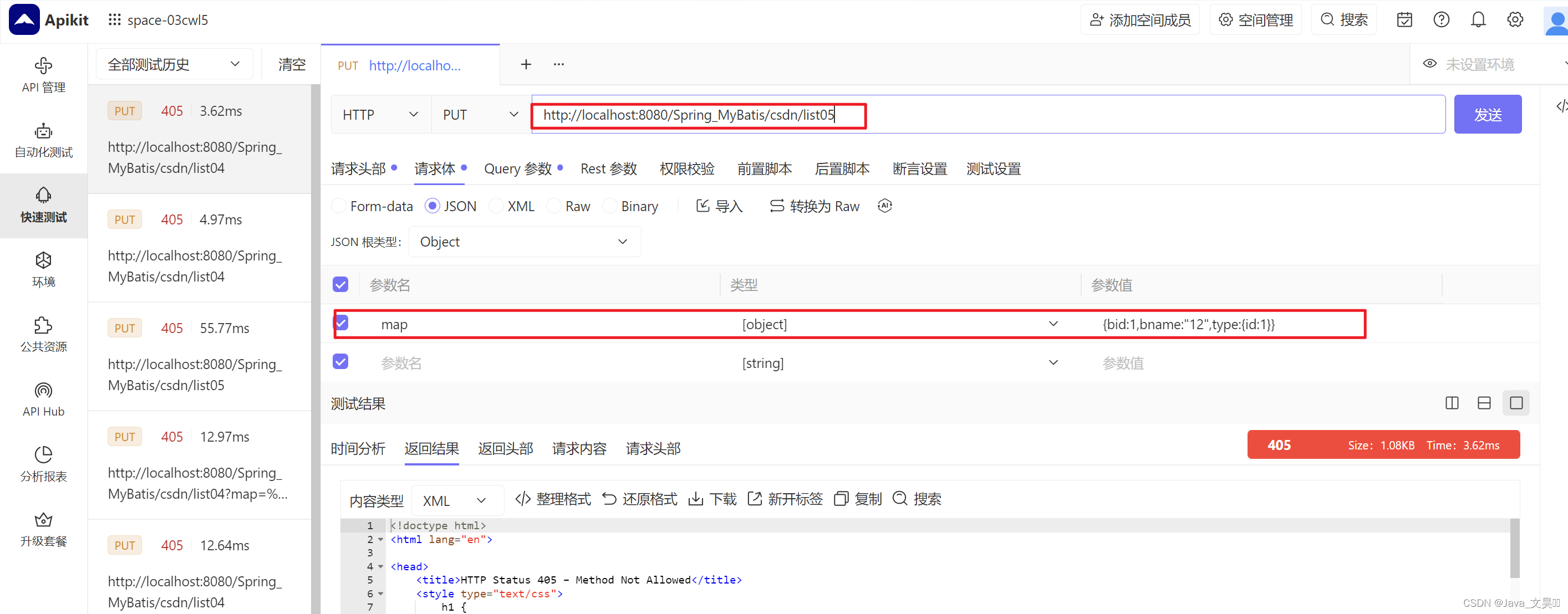
可以获取到参数结果
2.6.@RequestHeader
Controller编写:
@Slf4j
@Controller
@RequestMapping("/csdn")
public class IndexController {@RequestMapping("/list06")public String list06(@RequestHeader String jwt) {log.info("@RequestHeader: jwt:{}",jwt);return "hello";}}此时请求映射的请求路径为:
http://localhost:8080/Spring_MyBatis/csdn/list06
三、返回值
为了方便模拟效果,借助ResponseUtil工具类,ResponseUtil类提供了一种方便的方式来将对象以文本或JSON格式写入HTTP响应流中,以便在Web应用程序中向客户端返回数据。
package com.liwen.util;import com.fasterxml.jackson.databind.ObjectMapper;import javax.servlet.http.HttpServletResponse;
import java.io.PrintWriter;public class ResponseUtil {public static void write(HttpServletResponse response,Object o)throws Exception{response.setContentType("text/html;charset=utf-8");PrintWriter out=response.getWriter();out.println(o.toString());out.flush();out.close();}public static void writeJson(HttpServletResponse response,Object o)throws Exception{ObjectMapper om = new ObjectMapper();
// om.writeValueAsString(o)代表了json串write(response, om.writeValueAsString(o));}
}pom.xml依赖
<dependency><groupId>com.fasterxml.jackson.core</groupId><artifactId>jackson-databind</artifactId><version>2.12.4</version> <!-- 请根据您的需求选择合适的版本 --></dependency>3.1.void
处理器对请求处理后,无需跳转到其它任何资源,此时可以让处理器方法返回 void。
Controller编写:
@Slf4j
@Controller
@RequestMapping("/csdn")
public class IndexController {@RequestMapping("/return01")public void return01(HttpServletResponse resp){Map<String,Object> map=new HashMap<>();map.put("code",200);map.put("msg","成功添加。。。");try {ResponseUtil.writeJson(resp,map);} catch (Exception e) {e.printStackTrace();}}}
3.2.String
通过http://localhost:8080/Spring_MyBatis/csdn/return02访问请求方法,并经过视图解析器跳转指定页面。
Controller编写:
@Slf4j
@Controller
@RequestMapping("/csdn")
public class IndexController {@RequestMapping("/return02")public String return02( ){return "hello";}}网页效果:

3.3.String+Model
通过http://localhost:8080/Spring_MyBatis/csdn/return03访问请求方法,并经过视图解析器跳转指定页面。
Controller编写:
@Slf4j
@Controller
@RequestMapping("/csdn")
public class IndexController {@RequestMapping("/return03")public String return03(Model Model,HttpServletRequest req){Model.addAttribute("name","Java文昊");req.setAttribute("age",18);return "hello";}}JSP页面:
<%@ page contentType="text/html;charset=UTF-8" language="java" %>
<html>
<head><title>Title</title>
</head>
<body>
用户名:${name}
年龄:${age}
</body>
</html>3.4.ModelAndView
Controller编写:
@Slf4j
@Controller
@RequestMapping("/csdn")
public class IndexController {@RequestMapping("/return04")public ModelAndView return04(){ModelAndView mv=new ModelAndView();mv.addObject("name","湖南彭于晏-文昊桑");mv.addObject("age",18);mv.setViewName("hello");return mv;}}JSP页面:
<%@ page contentType="text/html;charset=UTF-8" language="java" %>
<html>
<head><title>Title</title>
</head>
<body><br>用户名:${name}
年龄:${age}
</body>
</html>四、页面跳转
转发(forward:path)和重定向(redirect:path)这两种跳转方式将会绕开视图解析器的前缀和后缀;还有就是如果是在同一controller中则不用使用"/"从根目录开始,而如果是在不同的controller则一定要从根目录开始。
4.1.转发forward
- 当前类
Controller编写:
// 转发到当前类@RequestMapping("/forward01")public String forward01(){return "forward:return02";}@RequestMapping("/return02")public String return02( ){return "hello";}JSP页面:
<%@ page contentType="text/html;charset=UTF-8" language="java" %>
<html>
<head><title>Title</title>
</head>
<body>用户名:${name}
年龄:${age}
</body>
</html>- 其他类
Controller编写:
// 转发到其他类@RequestMapping("/forward02")public String forward02(){return "forward:/hello/requestTest";}@Controller
@RequestMapping("/hello")
public class hello {@RequestMapping("/requestTest")public String Hello(){return "text";}}JSP页面
<%@ page contentType="text/html;charset=UTF-8" language="java" %>
<html>
<head><title>Title</title>
</head>
<body>
你好我是其他类跳转过来的
</body>
</html>4.2.重定向redirect
- 当前类
Controller编写:
// 重定向到当前类@RequestMapping("/redirect01")public String redirect01(){return "redirect:return02";}@RequestMapping("/return02")public String return02( ){return "hello";}JSP页面:
<%@ page contentType="text/html;charset=UTF-8" language="java" %>
<html>
<head><title>Title</title>
</head>
<body>用户名:${name}
年龄:${age}
</body>
</html>- 其他类
Controller编写:
// 重定向到其他类@RequestMapping("/redirect02")public String redirect02(){return "redirect:/hello/requestTest";}@Controller
@RequestMapping("/hello")
public class hello {@RequestMapping("/requestTest")public String Hello(){return "text";}}JSP页面:
<%@ page contentType="text/html;charset=UTF-8" language="java" %>
<html>
<head><title>Title</title>
</head>
<body>
你好我是其他类跳转过来的
</body>
</html>
